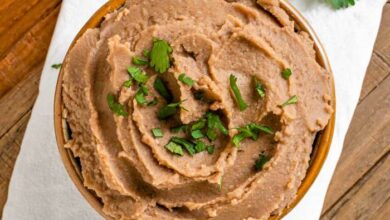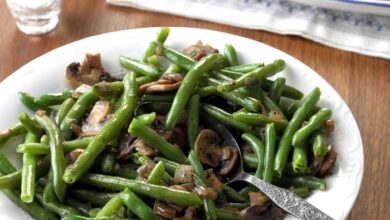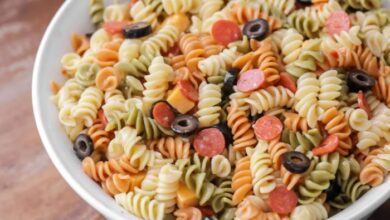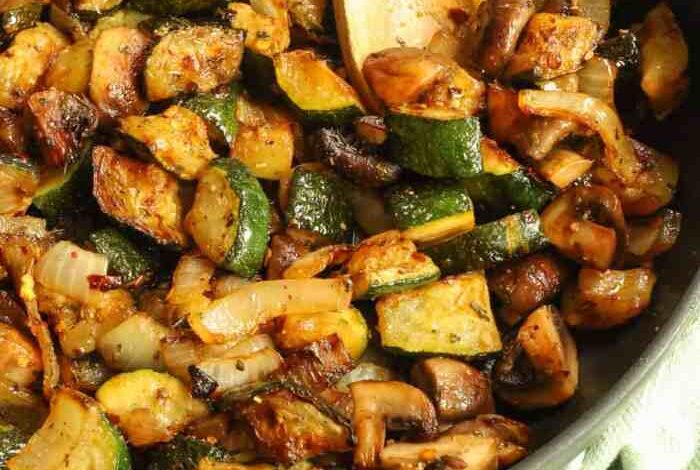
Sauteed Mushrooms: Quick & Simple
Sauteed mushrooms quick and simple – Sauteed mushrooms: quick and simple – these three words encapsulate the essence of a culinary delight that’s both incredibly versatile and surprisingly easy to achieve. Whether you’re looking for a flavorful side dish to complement your main course, a satisfying appetizer for a casual gathering, or a key ingredient to elevate your favorite recipes, sauteed mushrooms have you covered.
The beauty of this dish lies in its simplicity. With just a handful of readily available ingredients and a few basic techniques, you can transform humble mushrooms into a culinary masterpiece. This blog post will guide you through the entire process, from selecting the right mushrooms to mastering the art of sauteing, ensuring you create a dish that’s both delicious and impressive.
The Allure of Sauteed Mushrooms
Mushrooms are a culinary chameleon, effortlessly transforming from a humble side dish to a captivating centerpiece. Sauteed mushrooms, in particular, are a testament to the magic of simplicity. With just a few ingredients and a hot pan, you can create a symphony of flavors that will tantalize your taste buds.
The beauty of sauteed mushrooms lies in their versatility. They can be a delightful accompaniment to any main course, a delightful appetizer, or a key ingredient in countless recipes. Whether you prefer them earthy and savory, or with a hint of sweetness and spice, sauteed mushrooms offer endless possibilities for culinary exploration.
Types of Mushrooms
Mushrooms come in a wide array of shapes, sizes, and flavors, each adding a unique touch to your dish. Some popular varieties for sauteing include:
- Button Mushrooms:The most common variety, known for their mild flavor and delicate texture.
- Cremini Mushrooms:Also known as baby bellas, these mushrooms have a richer, earthier flavor than button mushrooms.
- Shiitake Mushrooms:With a meaty texture and umami flavor, shiitake mushrooms are a popular choice for Asian cuisine.
- Oyster Mushrooms:These delicate mushrooms have a mild, slightly sweet flavor and a soft, fan-like shape.
Essential Ingredients and Equipment
Sauteed mushrooms are a simple yet delicious dish that can be enjoyed as a side dish, appetizer, or even a main course. With just a few essential ingredients and basic equipment, you can create a flavorful and satisfying meal.
Essential Ingredients
The beauty of sauteed mushrooms lies in their simplicity. You only need a handful of ingredients to create a delectable dish.
Sometimes, the simplest meals are the most satisfying. Sauteed mushrooms, with just a touch of garlic and herbs, are a perfect example. The earthy flavor of the mushrooms pairs beautifully with a creamy sauce, like this roasted red pepper cream sauce I found online.
The sweetness of the roasted peppers balances the richness of the cream, creating a truly delicious topping for your sauteed mushrooms.
- Mushrooms: The star of the show! Choose your favorite variety, whether it’s button mushrooms, cremini, shiitake, or oyster mushrooms. Each type brings a unique flavor and texture to the dish.
- Butter or Olive Oil: This provides the base for cooking and adds a rich flavor to the mushrooms.
- Garlic: A touch of garlic enhances the savory flavor of the mushrooms.
- Salt and Pepper: These seasonings are essential for balancing the flavors and bringing out the best in the mushrooms.
- Optional: Herbs and Spices: Enhance the flavor profile by adding your favorite herbs and spices, such as thyme, rosemary, or paprika.
Essential Equipment
The equipment required for sauteing mushrooms is minimal and likely already available in your kitchen.
- Skillet or Saute Pan: A good quality skillet or saute pan is essential for cooking the mushrooms evenly. Choose a pan with a wide base to ensure that the mushrooms have enough space to cook properly.
- Knife: A sharp knife is needed for slicing the mushrooms to your desired size. This ensures even cooking and allows the flavors to develop properly.
- Spatula: A sturdy spatula is essential for flipping the mushrooms and ensuring they cook evenly on both sides.
Ingredient Breakdown
| Ingredient | Quantity | Purpose | Substitution Options |
|---|---|---|---|
| Mushrooms | 1 pound | The main ingredient, providing flavor and texture. | Any variety of mushrooms can be used, such as button, cremini, shiitake, or oyster. |
| Butter or Olive Oil | 2 tablespoons | Provides a base for cooking and adds richness. | Other cooking oils can be used, such as vegetable oil or canola oil. |
| Garlic | 2 cloves | Enhances the savory flavor of the mushrooms. | Garlic powder can be used as a substitute, but fresh garlic is preferred for optimal flavor. |
| Salt and Pepper | To taste | Seasonings to balance the flavors. | Other spices can be added, such as thyme, rosemary, or paprika. |
Preparation Steps
Preparing mushrooms for sauteing is a simple yet crucial step that ensures they cook evenly and retain their flavor and texture. The right preparation techniques, including cleaning, slicing, and any pre-treatment, will significantly enhance the final dish.
Preparing Mushrooms
The process of preparing mushrooms involves cleaning, slicing, and, in some cases, pre-treatment. These steps are essential for removing dirt, maximizing surface area for cooking, and preventing excessive shrinkage.
| Step | Description | Image Description | Tips |
|---|---|---|---|
| 1 | Clean the mushrooms by wiping them with a damp paper towel or a mushroom brush. Avoid washing them under running water, as this can make them soggy. | A person wiping a mushroom with a damp paper towel. | If the mushrooms are very dirty, you can quickly rinse them under cool water, but pat them dry immediately. |
| 2 | Slice the mushrooms according to your preference. Thin slices cook faster and are ideal for sauteing. | A person slicing a mushroom with a sharp knife. | For a more rustic dish, you can leave the mushrooms whole or cut them into larger pieces. |
| 3 | For certain mushroom varieties, like cremini or portobello, you can remove the stems and discard them or use them for other purposes. | A person removing the stem of a portobello mushroom. | Mushroom stems can be used in soups, stews, or even blended into sauces. |
| 4 | Consider pre-treatment, such as soaking the mushrooms in salted water for a few minutes to remove any bitterness or dirt. | A bowl of mushrooms soaking in salted water. | This step is optional and depends on the type and freshness of the mushrooms. |
Sauteing Techniques
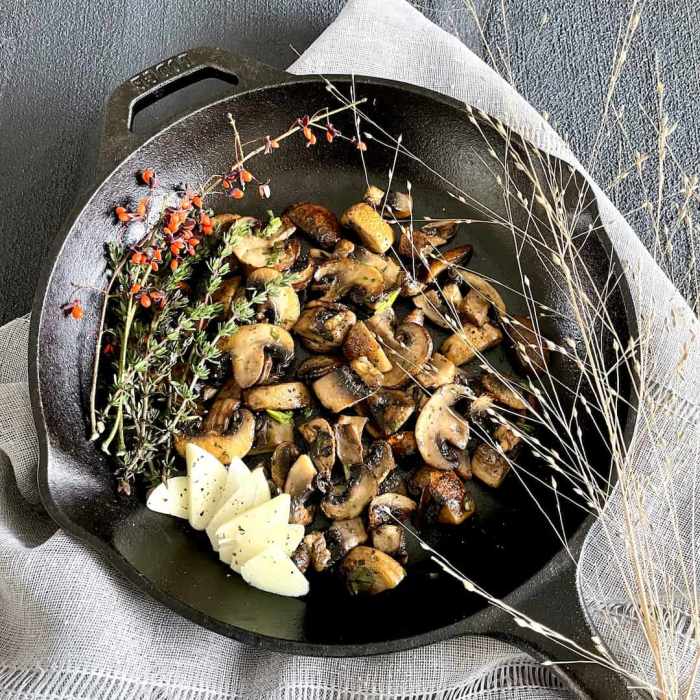
Sauteing is a fundamental cooking technique that involves quickly cooking food in a small amount of fat over high heat. It’s a versatile method that can be used to cook a wide variety of ingredients, from vegetables and proteins to seafood and grains.
Mastering the art of sauteing involves understanding the importance of heat control, choosing the right pan, and utilizing various techniques.
Heat Control and Pan Selection
The key to successful sauteing lies in maintaining the right temperature. Too low of a heat will result in food steaming instead of browning, while too high of a heat will lead to burning. The ideal temperature for sauteing is medium-high heat, which allows for quick cooking and browning without burning.The type of pan you use also plays a crucial role in sauteing.
A good saute pan should be made of heavy-bottom material, such as cast iron or stainless steel, which distributes heat evenly and prevents hot spots. A nonstick pan is also a good choice for sauteing delicate ingredients that tend to stick.
Various Sauteing Methods
There are several different sauteing methods, each with its own advantages and disadvantages. Here’s a breakdown of some common techniques:
- Standard Sauteing:This involves cooking food in a single layer in a hot pan with a small amount of fat. This method is ideal for cooking vegetables, proteins, and seafood.
- Stir-Frying:This technique is similar to standard sauteing, but it involves constantly stirring the food to prevent sticking and ensure even cooking. Stir-frying is often used in Asian cuisine and is perfect for cooking quick and flavorful dishes.
- Pan-Searing:This method involves cooking food over high heat for a short period of time to create a crispy crust. Pan-searing is often used for proteins, such as steak and chicken, to develop flavor and enhance texture.
Comparing Sauteing Techniques
Here’s a table that compares and contrasts different sauteing techniques:
| Technique | Description | Pros | Cons |
|---|---|---|---|
| Standard Sauteing | Cooking food in a single layer in a hot pan with a small amount of fat. | Versatile, quick cooking time, good for browning and developing flavor. | Requires careful monitoring to prevent overcooking or burning. |
| Stir-Frying | Constantly stirring food in a hot pan with a small amount of fat. | Quick cooking time, good for creating flavorful dishes, ideal for vegetables and proteins. | Requires constant attention and stirring, can be challenging for beginners. |
| Pan-Searing | Cooking food over high heat for a short period of time to create a crispy crust. | Creates a delicious crust, enhances flavor and texture, good for proteins. | Requires high heat and careful timing, can be difficult to achieve an even sear. |
Flavor Enhancements
The inherent earthy and savory flavors of mushrooms can be further enhanced by incorporating seasonings and aromatics during the sauteing process. These additions not only amplify the existing flavors but also create entirely new flavor profiles, adding depth and complexity to your dish.
Sautéed mushrooms are a versatile side dish that can elevate any meal. They pair perfectly with a juicy frenched rack of lamb , adding a savory depth to the overall flavor profile. But even without a fancy lamb dish, a quick and simple sauté of mushrooms can be a satisfying meal on its own, especially when paired with crusty bread and a crisp salad.
Seasonings and Aromatics for Flavor Enhancement
A wide array of seasonings and aromatics can be used to elevate the flavor of sauteed mushrooms. These ingredients are categorized based on their primary flavor profiles:
- Garlic and Onion Family:Garlic, shallots, and onions contribute savory, pungent notes and add a touch of sweetness. They are versatile and pair well with most mushroom varieties.
- Herbs:Fresh or dried herbs like thyme, rosemary, parsley, oregano, and chives add aromatic depth and complexity.
- Spices:Spices such as black pepper, red pepper flakes, paprika, and cumin offer heat, warmth, and distinct flavor profiles.
- Citrus:Lemon zest, orange zest, or lime juice add a bright and tangy element, balancing the richness of the mushrooms.
- Soy Sauce and Ginger:A combination of soy sauce and ginger creates a savory and umami-rich flavor, especially suitable for Asian-inspired dishes.
- Wine:A splash of white wine or red wine adds depth and complexity, especially when paired with earthy mushrooms like cremini or portobello.
Flavor Combinations
The possibilities for flavor combinations are endless, but here are some popular pairings:
- Garlic and Herbs:A classic combination that enhances the earthy flavor of mushrooms. Try garlic with thyme, parsley, or rosemary.
- Soy Sauce and Ginger:A savory and umami-rich combination that works well with shiitake mushrooms.
- Lemon and Herbs:Lemon zest and herbs like parsley or chives add brightness and freshness to sauteed mushrooms.
- White Wine and Herbs:A splash of white wine and herbs like thyme or rosemary create a sophisticated and flavorful sauce.
Serving Suggestions
Sauteed mushrooms are a versatile dish that can be enjoyed in many ways. Their earthy flavor and rich texture complement a wide range of cuisines and cooking styles. Whether you prefer them as a simple side dish, a flavorful appetizer, or a topping for your favorite meal, sauteed mushrooms offer endless possibilities for culinary creativity.
Vegetarian Dishes
Sauteed mushrooms are a fantastic addition to vegetarian meals, providing a hearty and satisfying protein source.
- Mushroom and Tofu Stir-Fry:Combine sauteed mushrooms with firm tofu, chopped vegetables, and a flavorful sauce for a protein-packed stir-fry.
- Mushroom and Spinach Quiche:A classic vegetarian dish that can be made with sauteed mushrooms, spinach, cheese, and a flaky crust.
- Mushroom and Vegetable Pasta:Toss sauteed mushrooms with your favorite pasta, fresh vegetables, and a simple olive oil and garlic sauce.
Meat-Based Dishes
Sauteed mushrooms can elevate meat-based dishes with their umami flavor and texture.
Sometimes I crave the simplicity of sautéed mushrooms, just a quick pan-fry with garlic and a sprinkle of herbs. It’s a perfect side dish for any meal, but sometimes I want something a little sweeter. That’s when I turn to my air fryer and whip up a batch of air fryer apple fritters.
The crispy exterior and warm, cinnamon-spiced apple filling are a delightful contrast to the savory mushrooms, making for a well-rounded and satisfying culinary experience.
- Steak with Sauteed Mushrooms:Pair sauteed mushrooms with a juicy steak for a classic and satisfying meal.
- Chicken and Mushroom Pasta:Combine sauteed mushrooms with chicken, pasta, and a creamy sauce for a comforting and flavorful dish.
- Mushroom and Beef Burgers:Add sauteed mushrooms to your burger patties for a boost of flavor and texture.
Appetizers
Sauteed mushrooms make a delicious and elegant appetizer.
- Mushroom Bruschetta:Top toasted bread with sauteed mushrooms, balsamic glaze, and fresh herbs for a simple and flavorful appetizer.
- Mushroom Crostini:Sauté mushrooms with garlic and herbs, then serve on toasted crostini for a satisfying appetizer.
- Mushroom and Goat Cheese Tartlets:Fill small tart shells with a mixture of sauteed mushrooms, goat cheese, and herbs for a sophisticated appetizer.
Toppings, Sauteed mushrooms quick and simple
Sauteed mushrooms can be used as a topping for various dishes, adding flavor and texture.
- Pizza:Top your favorite pizza with sauteed mushrooms, onions, and cheese for a delicious and savory topping.
- Tacos:Add sauteed mushrooms to your tacos for a hearty and flavorful topping.
- Salads:Sautéed mushrooms can add a savory element to salads, complementing the fresh greens and other vegetables.
Variations and Adaptations
The basic sauteed mushroom recipe is a versatile starting point for endless culinary explorations. You can easily adjust the flavors and textures to suit your preferences and create dishes that are both delicious and satisfying.
Mushroom Variations
Different mushroom varieties offer unique flavors and textures. Experimenting with different types of mushrooms can add a new dimension to your sauteed dish.
| Variation | Description | Ingredients | Tips |
|---|---|---|---|
| Shiitake Mushrooms | Known for their earthy and umami flavors, shiitake mushrooms add a rich depth to the dish. | Shiitake mushrooms, olive oil, garlic, soy sauce | Use dried shiitake mushrooms for an even more intense flavor. |
| Cremini Mushrooms | These mushrooms have a slightly firmer texture and a more pronounced flavor than button mushrooms. | Cremini mushrooms, butter, thyme, salt, pepper | Sauté cremini mushrooms over medium heat to develop their rich flavor. |
| Oyster Mushrooms | Oyster mushrooms have a delicate flavor and a soft, slightly chewy texture. | Oyster mushrooms, lemon juice, garlic, parsley | Sauté oyster mushrooms quickly to preserve their delicate texture. |
| Chanterelle Mushrooms | Known for their fruity and peppery flavors, chanterelles are a prized wild mushroom. | Chanterelle mushrooms, butter, shallots, white wine | Sauté chanterelles over low heat to bring out their delicate flavors. |
Additional Vegetables
Adding other vegetables to your sauteed mushrooms can create a more balanced and flavorful dish.
| Variation | Description | Ingredients | Tips |
|---|---|---|---|
| Mushrooms and Spinach | A classic combination that is both healthy and delicious. | Mushrooms, spinach, garlic, olive oil, salt, pepper | Add the spinach towards the end of the cooking process to ensure it remains tender. |
| Mushrooms and Asparagus | A springtime favorite that pairs well with the earthy flavors of mushrooms. | Mushrooms, asparagus, lemon juice, olive oil, salt, pepper | Sauté the asparagus separately to ensure it retains its crisp texture. |
| Mushrooms and Onions | A simple and flavorful combination that is perfect for a side dish or topping. | Mushrooms, onions, butter, thyme, salt, pepper | Caramelize the onions before adding the mushrooms for a deeper flavor. |
| Mushrooms and Bell Peppers | A colorful and flavorful combination that is perfect for a vegetarian main course. | Mushrooms, bell peppers, garlic, olive oil, chili flakes, salt, pepper | Add the bell peppers towards the end of the cooking process to ensure they remain crisp. |
Storage and Reheating: Sauteed Mushrooms Quick And Simple

Storing leftover sauteed mushrooms is a simple process, allowing you to enjoy their delightful flavors later. Here’s a guide to storing and reheating them while preserving their texture and flavor.
Storing Sauteed Mushrooms
To ensure maximum freshness and prevent spoilage, it’s crucial to store leftover sauteed mushrooms properly.
- Allow the sauteed mushrooms to cool completely to room temperature before storing.
- Transfer them to an airtight container, ensuring no air remains inside. This helps prevent oxidation and moisture loss.
- Refrigerate the container for up to 3-4 days for optimal freshness.
Reheating Sauteed Mushrooms
Reheating sauteed mushrooms is best done using methods that maintain their texture and flavor.
- Stovetop Reheating:Add the mushrooms to a skillet over medium heat with a tablespoon of butter or oil. Cook for a few minutes, stirring occasionally, until heated through.
- Oven Reheating:Preheat your oven to 350°F (175°C). Spread the mushrooms on a baking sheet and bake for 10-15 minutes, until warmed through.
- Microwave Reheating:This method is generally less preferred as it can lead to moisture loss and a rubbery texture. If using the microwave, heat the mushrooms in a microwave-safe dish for 30-60 seconds, stirring halfway through.
Maximizing Shelf Life
To prolong the shelf life of sauteed mushrooms, consider these tips:
- Freezing:You can freeze sauteed mushrooms for up to 3 months. Place them in a freezer-safe bag or container, squeezing out as much air as possible. To reheat frozen mushrooms, thaw them overnight in the refrigerator or microwave them for a few minutes.
- Adding Acid:A splash of lemon juice or vinegar can help preserve the mushrooms’ color and texture during storage.

